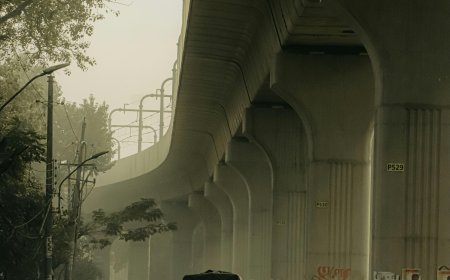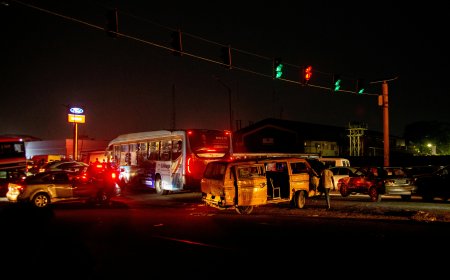Tragic Bus Crash Kills Dozens of Afghans Deported from Iran
A bus carrying Afghans deported from Iran crashed, killing dozens. Survivors recount a harrowing journey home amid rising migration tensions.
A harrowing tragedy struck the roads between Iran and Afghanistan this week as a bus carrying deported Afghan migrants plunged off a mountain road, leaving dozens dead and scores injured. Survivors and local authorities painted a grim picture of desperation, exhaustion, and the risks faced by those fleeing conflict and poverty.
The incident has brought renewed international attention to the plight of Afghan migrants, the challenges of forced deportations, and the dangers inherent in long, often unregulated journeys across the region.
The Incident: How It Happened
According to eyewitnesses and local authorities, the bus veered off a narrow mountain highway while descending toward the border.
- Location: The crash occurred in Nimroz province, southwestern Afghanistan, near the Iranian border.
- Casualties: Early reports indicate at least 35 people were killed, with more than 20 critically injured.
- Immediate Response: Emergency teams rushed to the scene, but rough terrain and poor weather delayed rescue operations.
Authorities have not yet confirmed whether mechanical failure, overloading, or road conditions were the primary cause, but preliminary investigations are underway.
Afghan Migrants in Iran: A Humanitarian Crisis
Afghan citizens have lived in Iran for decades, often fleeing conflict, poverty, or persecution at home. Many work in informal sectors, sending remittances to families back in Afghanistan.
However, tensions between Iran and Afghanistan have increased in recent years, with the Iranian government intensifying deportations as economic pressures mount.
- Forced Returns: Deportees are typically sent back in groups, often traveling long distances under harsh conditions.
- Legal Ambiguities: Many migrants lack official documentation, leaving them vulnerable to arrests and expulsions.
- Economic Hardship: Returning families frequently find limited access to jobs, housing, and basic services.
The bus tragedy underscores the human cost of these policies, highlighting the dangers faced by migrants during forced repatriation.
Eyewitness Accounts: Stories of Survival
Survivors of the crash shared harrowing accounts of the moments before and after the accident. One young man, who suffered multiple fractures, described the scene:
"The bus was full. People were sleeping on the floor. Suddenly, the driver swerved to avoid a truck. We were thrown everywhere. I woke up lying on rocks, hearing screams."
Another woman, clutching her child, recalled the panic and confusion as the bus toppled down the mountainside. She expressed fear not just of the crash, but of returning to a homeland where security and stability remain elusive.
These personal stories illustrate the human dimension behind statistics and headlines, reminding the world that migration is more than a policy issue—it is a matter of life and death.
Regional Tensions and Policy Implications
The tragedy comes amid growing strain between Afghanistan and its neighbors. Iran, facing economic challenges and internal unrest, has sought to tighten its borders, resulting in increased deportations.
- Cross-Border Challenges: Afghanistan struggles to absorb large numbers of returnees, particularly in border provinces with limited infrastructure.
- International Scrutiny: Human rights organizations have called for safer repatriation processes and better monitoring of deportation procedures.
- Political Debate: Afghan authorities face criticism for failing to provide adequate support for returnees, while Iran defends its border enforcement policies.
Experts warn that without coordinated regional policies, tragedies like this may continue to occur.
The Human Toll: Families and Communities
For many, the bus crash is more than a news story—it is a personal catastrophe. Families waiting in Afghanistan for loved ones received the devastating news with disbelief and grief.
Local community leaders described scenes of mourning at hospitals and morgues. Funerals were hastily organized, often without the support of social services.
- Emotional Impact: Survivors report trauma, nightmares, and fear of future travel.
- Economic Loss: Many victims were breadwinners for their families, leaving dependents without income.
- Community Strain: Hospitals and local authorities face overwhelming pressure to manage casualties and provide support.
This section underscores that the crisis is not merely statistical—it has lasting social and psychological consequences.
Road Safety and Transport Concerns
Analysts say the crash highlights broader issues regarding transportation safety for migrants in the region.
- Overcrowding: Buses often exceed safe capacity limits.
- Poor Road Conditions: Mountainous highways and inadequate signage contribute to accidents.
- Vehicle Maintenance: Older, poorly maintained buses increase the risk of mechanical failures.
- Lack of Oversight: Unregulated transport networks for migrants leave passengers vulnerable.
Improving infrastructure, regulation, and oversight is critical to preventing future tragedies.
International Response and Humanitarian Aid
The international community has expressed concern over the crash and the broader plight of Afghan migrants.
- UN Agencies: Urged both Iran and Afghanistan to ensure safe, humane treatment for deportees.
- NGOs: Mobilizing emergency aid, including medical supplies, shelters, and psychosocial support for survivors.
- Regional Dialogue: Calls for diplomatic coordination to improve border management and protect vulnerable populations.
Experts argue that international engagement is essential to prevent further loss of life and support communities overwhelmed by sudden influxes of returnees.
Conclusion: Lessons from Tragedy
The bus crash is a stark reminder of the dangers facing migrants in volatile regions. Beyond political debates and border policies, it highlights human vulnerability, the cost of unregulated travel, and the pressing need for humane, coordinated migration management.
As Afghan families mourn, policymakers face urgent questions: How can deportations be carried out safely? What support systems are needed for returnees? And how can regional cooperation prevent such disasters in the future?
The tragedy is not just about a bus or a border—it is about the value of human life and the responsibility of governments to protect those most at risk.
FAQs
1. How many people were killed in the bus crash?
Preliminary reports indicate at least 35 fatalities, with more than 20 critically injured.
2. Why were the Afghans deported from Iran?
They were part of Iran’s increased deportation policy targeting undocumented migrants and those facing economic or legal challenges.
3. What is being done to help survivors?
Emergency medical teams, local authorities, and NGOs are providing immediate aid, including hospitalization, food, and shelter.
4. Are Afghan deportations common?
Yes, deportations have increased in recent years amid economic pressures and stricter border enforcement in Iran.
5. What broader issues does this tragedy highlight?
The crash underscores unsafe transport conditions, inadequate migrant protections, and the human cost of forced repatriation policies.
What's Your Reaction?
 Like
0
Like
0
 Dislike
0
Dislike
0
 Love
0
Love
0
 Funny
0
Funny
0
 Angry
0
Angry
0
 Sad
0
Sad
0
 Wow
0
Wow
0




































































